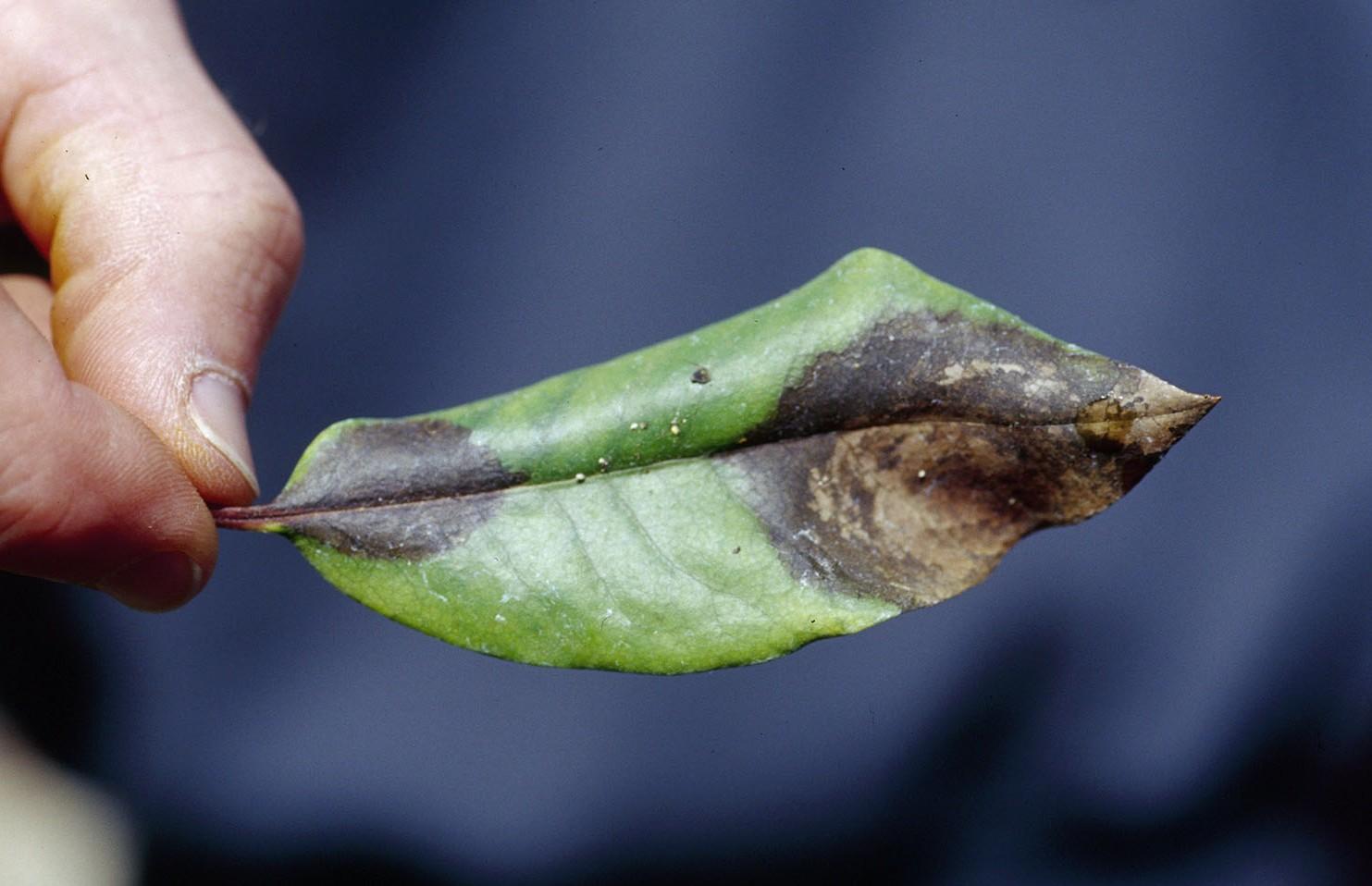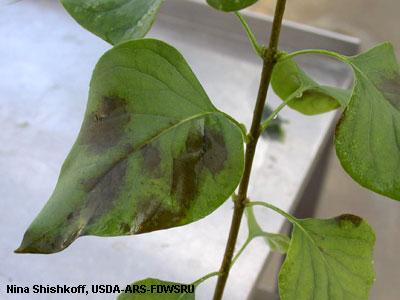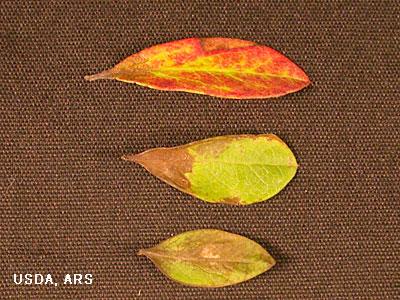Sudden Oak Death (SOD, Phytophthora canker disease, or Ramorum blight) is a devastating disease that has killed thousands of trees in California. Sudden Oak Death is caused by Phytophthora ramorum, which is a fungus-like pathogen that spreads by sending spores from infected leaves and twigs.
To date, Sudden Oak Death has not been found infecting oak trees in Maryland. The name "sudden oak death" is somewhat misleading and the disease is increasingly being referred to as "ramorum blight", or "ramorum dieback". Popular landscape plants including rhododendron, azaleas, camellias, viburnum, mountain laurel (Kalmia),and lilacs purchased and planted in Maryland since March 2003 could be providing a safe harbor for the pathogen. The disease was brought into Maryland on infected plants from the west coast. In April of 2004, in the course of conducting routine surveys for P. ramorum, Maryland Department of Agriculture (MDA) discovered rhododendrons testing positive for the pathogen in a retail garden center.
Until 2003, P. ramorum was believed to be confined to native plants in the environment in northern coastal California, Oregon, and British Columbia in North America. In 2002, USDA imposed a quarantine that now includes 13 counties in California and an area in Oregon to prevent its artificial spread through commerce. In 2003, plants in Oregon and Washington nurseries tested positive for the pathogen. Although the introduction was contained and eradicated, concerns about the role of nursery plants in spreading the disease mounted.
In Maryland, if you suspect a plant is infected with ramorum blight contact us at Ask Extension for assistance. Please include clear photos of the plant(s) in question.
Adapted from August 11, 2004, Invasive Species of Concern in Maryland-Carol Holko
 English
English العربية
العربية Български
Български 简体中文
简体中文 繁體中文
繁體中文 Hrvatski
Hrvatski Čeština
Čeština Dansk
Dansk Nederlands
Nederlands Suomi
Suomi Français
Français Deutsch
Deutsch Ελληνικά
Ελληνικά हिन्दी
हिन्दी Italiano
Italiano 日本語
日本語 한국어
한국어 Norsk bokmål
Norsk bokmål Polski
Polski Português
Português Română
Română Русский
Русский Español
Español Svenska
Svenska Català
Català Filipino
Filipino עִבְרִית
עִבְרִית Bahasa Indonesia
Bahasa Indonesia Latviešu valoda
Latviešu valoda Lietuvių kalba
Lietuvių kalba Српски језик
Српски језик Slovenčina
Slovenčina Slovenščina
Slovenščina Українська
Українська Tiếng Việt
Tiếng Việt Shqip
Shqip Eesti
Eesti Galego
Galego Magyar
Magyar Maltese
Maltese ไทย
ไทย Türkçe
Türkçe فارسی
فارسی Afrikaans
Afrikaans Bahasa Melayu
Bahasa Melayu Kiswahili
Kiswahili Gaeilge
Gaeilge Cymraeg
Cymraeg Беларуская мова
Беларуская мова Íslenska
Íslenska Македонски јазик
Македонски јазик יידיש
יידיש Հայերեն
Հայերեն Azərbaycan dili
Azərbaycan dili Euskara
Euskara ქართული
ქართული Kreyol ayisyen
Kreyol ayisyen اردو
اردو বাংলা
বাংলা Bosanski
Bosanski Cebuano
Cebuano Esperanto
Esperanto ગુજરાતી
ગુજરાતી Harshen Hausa
Harshen Hausa Hmong
Hmong Igbo
Igbo Basa Jawa
Basa Jawa ಕನ್ನಡ
ಕನ್ನಡ ភាសាខ្មែរ
ភាសាខ្មែរ ພາສາລາວ
ພາສາລາວ Latin
Latin Te Reo Māori
Te Reo Māori मराठी
मराठी Монгол
Монгол नेपाली
नेपाली ਪੰਜਾਬੀ
ਪੰਜਾਬੀ Afsoomaali
Afsoomaali தமிழ்
தமிழ் తెలుగు
తెలుగు Yorùbá
Yorùbá Zulu
Zulu ဗမာစာ
ဗမာစာ Chichewa
Chichewa Қазақ тілі
Қазақ тілі Malagasy
Malagasy മലയാളം
മലയാളം සිංහල
සිංහල Sesotho
Sesotho Basa Sunda
Basa Sunda Тоҷикӣ
Тоҷикӣ O‘zbekcha
O‘zbekcha አማርኛ
አማርኛ Corsu
Corsu Ōlelo Hawaiʻi
Ōlelo Hawaiʻi كوردی
كوردی Кыргызча
Кыргызча Lëtzebuergesch
Lëtzebuergesch پښتو
پښتو Samoan
Samoan Gàidhlig
Gàidhlig Shona
Shona سنڌي
سنڌي Frysk
Frysk isiXhosa
isiXhosa





